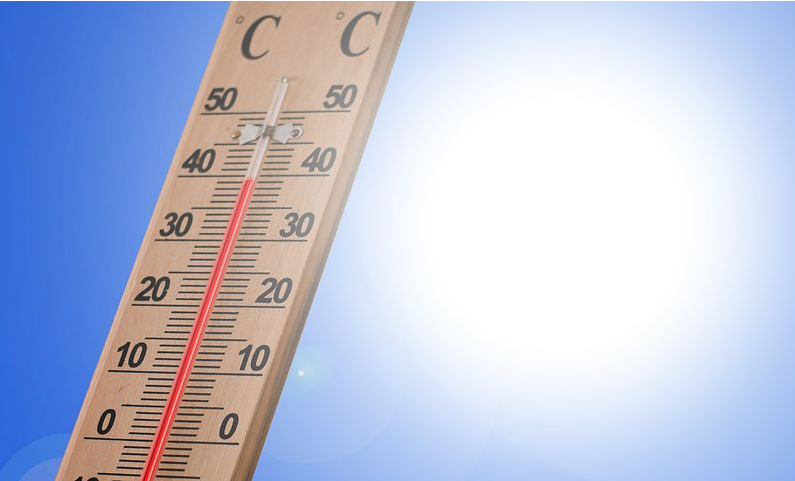Working safely through the hot weather.
Clive Thomas considers the law on working in hot weather and how best to get through the heat wave.

This week for the first time temperatures of 40°C have been forecast in the UK. The Met Office has issued the first ever Red warning for exceptional heat in Monday and Tuesday. Such temperature may be welcome if on holiday siting around a pool, but for those in factories, shops, offices and kitchens, it can cause unbearable working conditions and be a danger to health.
What is the danger for workers?
In many jobs “heat stress” is an issue all year round but during the hot summer months there may be an increased risk of heat stress for many other workers.
Heat stress occurs when the body’s means of controlling its internal temperature starts to fail. It can affect individuals in different ways, and some people are more susceptible to it than others.
Typical symptoms are:
- an inability to concentrate
- muscle cramps
- heat rash
- severe thirst – a late symptom of heat stress
- fainting
- heat exhaustion
- heat stroke – which is severe and can result in death if undetected.
When is it too hot to work ?
There is no max temperature set by las when it is considered too hot to work.
However, employers have a responsibility to ensure that conditions are “reasonable”, by keeping the temperature at a comfortable level, sometimes known as “thermal comfort” and for providing clean and fresh air.
In addition as employers are required to make a suitable assessment of all risks to the health and safety and take the necessary action – this should include the temperature in a workplace. Any assessment should include considering the work rate; working climate; employee clothing and use of respiratory protective equipment. In preparing the assessment Employers should also consult with employees and their unions to establish sensible means to cope with high temperatures.
The case for a maximum temperature guidelines
There are guidelines for minimum temperatures and Trade Unions have lobbied for corresponding maximum temperature guidelines to be set.
The Health and Safety Executive (the HSE) explains that a meaningful legally binding maximum temperature cannot be set because of the uniquely hot conditions present in certain roles e.g. glass works or foundries,” where it is still possible to work safely with appropriate controls. They also point out that there other issues of significance as well as air temperature – such as environmental factors (eg humidity and sources of heat in the workplace) which combine with personal factors (eg clothing) and work-related factors (eg the physically demanding nature of the work) to influence a worker’s thermal comfort.
The TUC has proposed that maximum temperatures be set at 30 °C or 27°C for people doing strenuous work. It emphases that this is an absolute maximum and that even if the temperature is slightly below that, employers should still attempt to reduce temperatures if they get above 24°C and workers feel uncomfortable.
In citing these figures they relied on recommendations from the Chartered Institute of Building Services Engineers for the optimum working temperatures which are as follows:
- Heavy work in factories at 13°C
- Light work in factories at 16°C
- Hospital wards and shops at 18°C
- Offices and dining rooms at 20°C
What steps can employers take?
The TUC have suggested 8 steps that employers can take to help their staff in the hot weather –
- Sun protection: provide sunscreen for outdoor workers.
- Flexible working/ Working from home: Allow staff to come in earlier or stay later to avoid the heat at work and during the rush hour commute and offer staff the opportunity to work from home.
- Keeping workplace buildings cool: by opening windows, using fans, and moving staff away from windows or sources of heat.
- Climate-proofing workplaces: installing ventilation, air-cooling and energy efficiency measures.
- Temporarily relaxing their workplace dress codes: Encouraging staff to wear more casual clothing to help them keep cool.
- Keeping staff comfortable: Allowing breaks and providing a supply of cold water/ drinks.
- Talking and listening to staff and their union: Staff will have their own ideas about how best to cope with the excessive heat.
- Sensible hours and shaded areas for outdoor workers Canopies/shades should be provided if possible and tasks should be scheduled for early morning and late afternoon.
So with forward planning, collaboration and common sense solutions we should all be able to work through the heat wave and enjoy a productive Summer.
